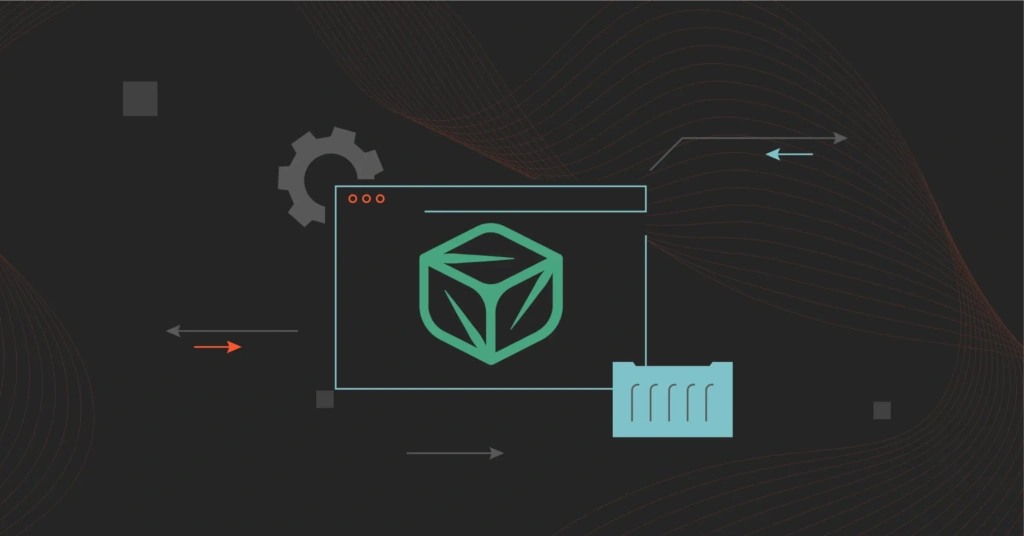One of the main reasons organizations migrate to the cloud is to avoid the high upfront costs of traditional IT infrastructure (CapEx). Yet, cloud computing is also an expense (OpEx). And surprisingly, one-third of that spend often goes to waste.
While the cloud can be cost-effective in the long run, this only happens when you incorporate your cloud cost management approach with FinOps.
A tool like Finout can help, but its effectiveness depends on your organization’s needs.
In this guide, we’ll explore what Finout offers and why you might need to consider Finout alternatives.
What Is FinOut?
FinOut offers cloud cost management and optimization solutions. It consolidates cloud costs from AWS, GCP, Azure, and Oracle Cloud into a single, detailed view using its MegaBill feature.
MegaBill tracks cloud spending by providing a clear overview of your daily, total usage, and monthly costs to help identify areas for cost optimization.
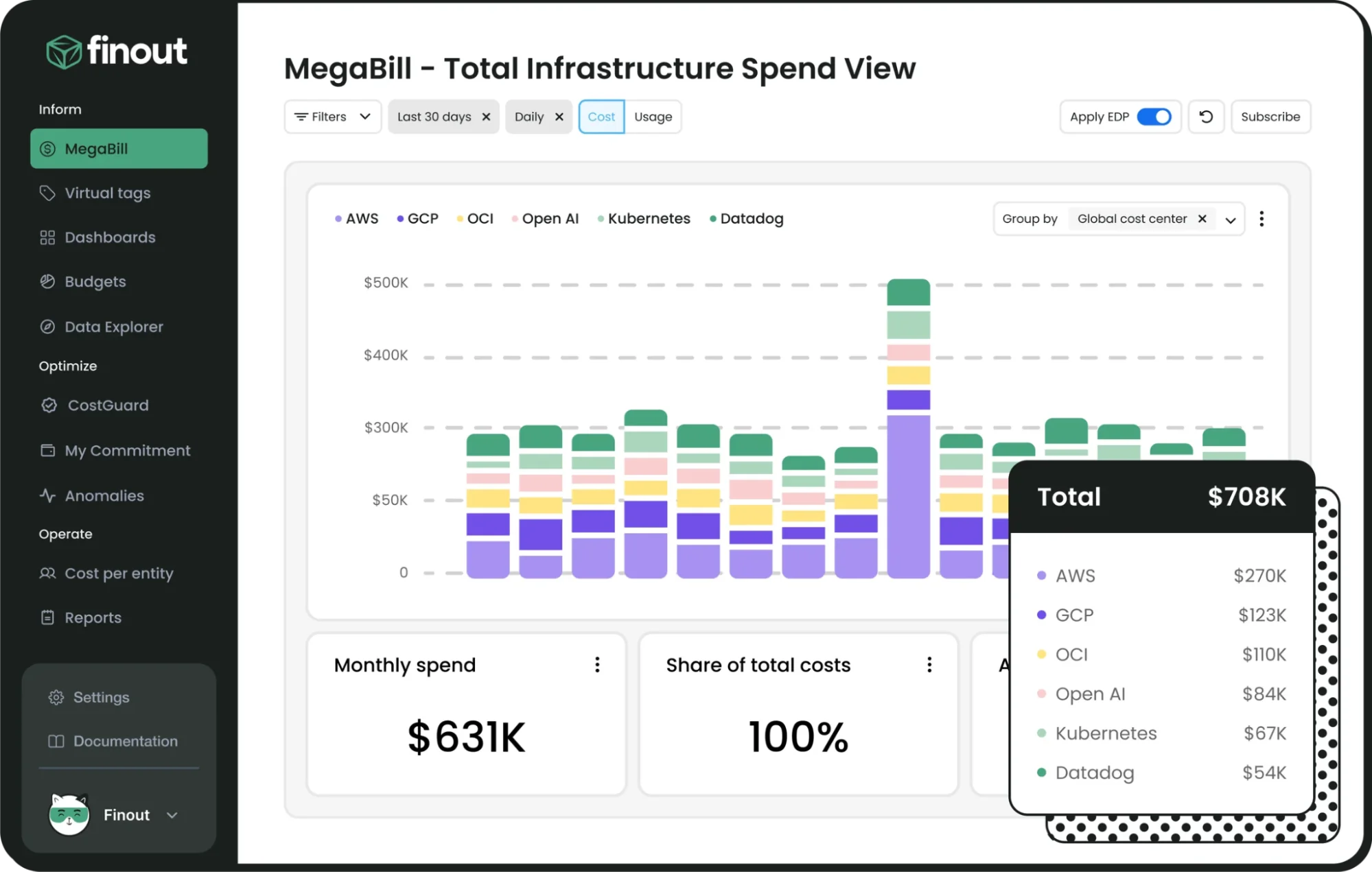
FinOut also supports FinOps through a virtual tagging feature that enables FinOps teams to allocate 100% of cloud spend to unit costs.
Yet, FinOut is not perfect.
Why Consider FinOut Alternatives?
While FinOut’s virtual tagging simplifies cost management, it is only as effective as the resources it draws from. If resource tagging is incomplete or not updated in real-time, the effectiveness of virtual tagging in managing costs can be compromised. Additionally, like traditional tagging, not all resources can be tagged in different cloud environments, leading to incomplete cost tracking.
FinOut is also primarily aimed at enterprise-level organizations. Its subscription model is designed for companies with significant cloud spending who can justify the cost. For small businesses, both the pricing and the advanced features may be more than necessary, making FinOut less suitable for their needs.
So, what are the best FinOut alternatives to address the above limitations?
11 Best Finout Alternatives To Switch To
Consider the following.
1. CloudZero
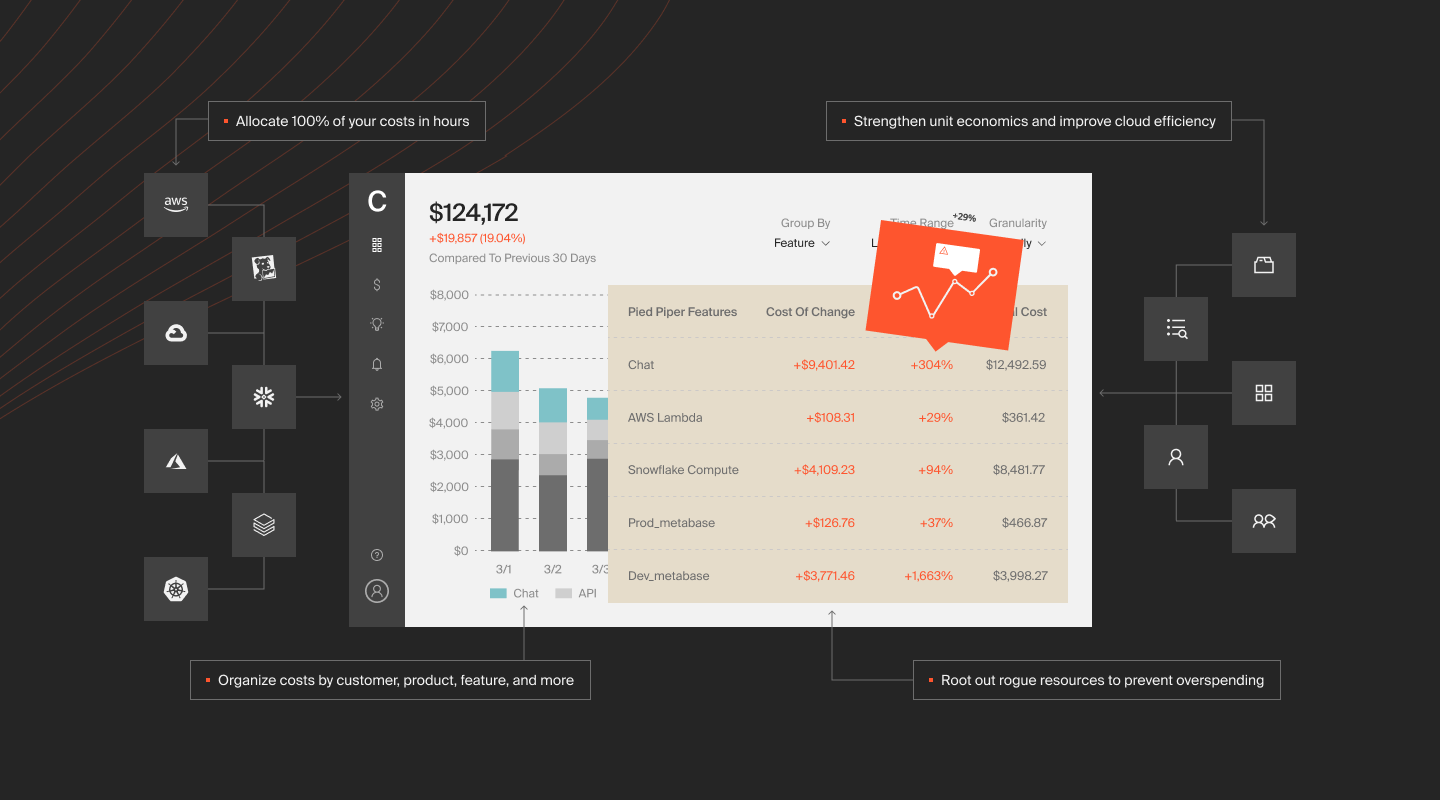
CloudZero is the go-to platform for most modern enterprises, from small to large, for many reasons.
For one, CloudZero simplifies cloud cost management through a clear four-step process. Ingest, Allocate, Analyze, and Engage. It ingests data from major cloud providers, including AWS, Azure, Google Cloud Platform (GCP), and Oracle. Then, it allocates costs by associating them with specific teams, products, or features using code-driven approaches. Next, the platform analyzes this data to provide detailed insights, such as cost per cloud, customer, team, product, and more. These insights help drive decisions that improve product architecture, optimize cloud services, and improve customer profitability.
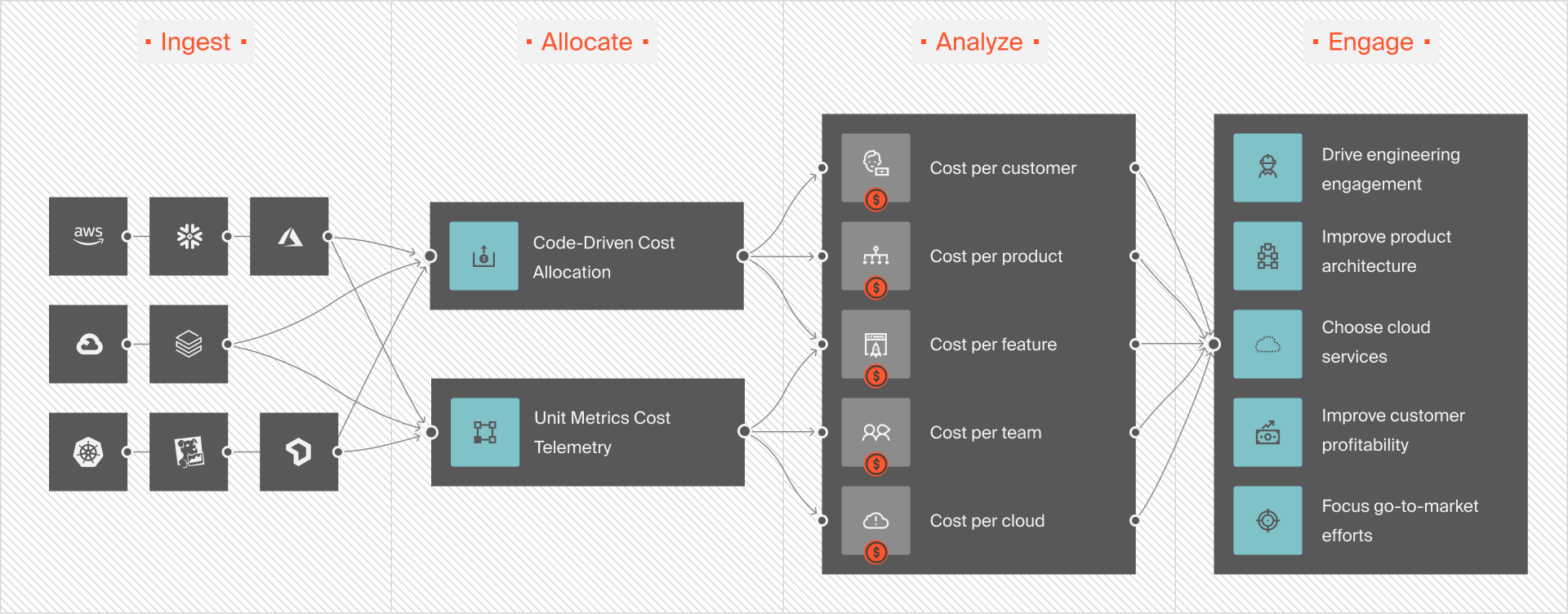
CloudZero offers precise cost insights for finance, engineering, product teams, and executives. It helps engineers stay on budget and provides finance with clear cost data. FinOps teams can allocate 100% of cloud spend, stay audit-ready, and create accurate forecasts to prevent cost surprises. Product managers can see where to invest or cut back, and executives gain key financial metrics like COGS and gross profit to assess company performance.
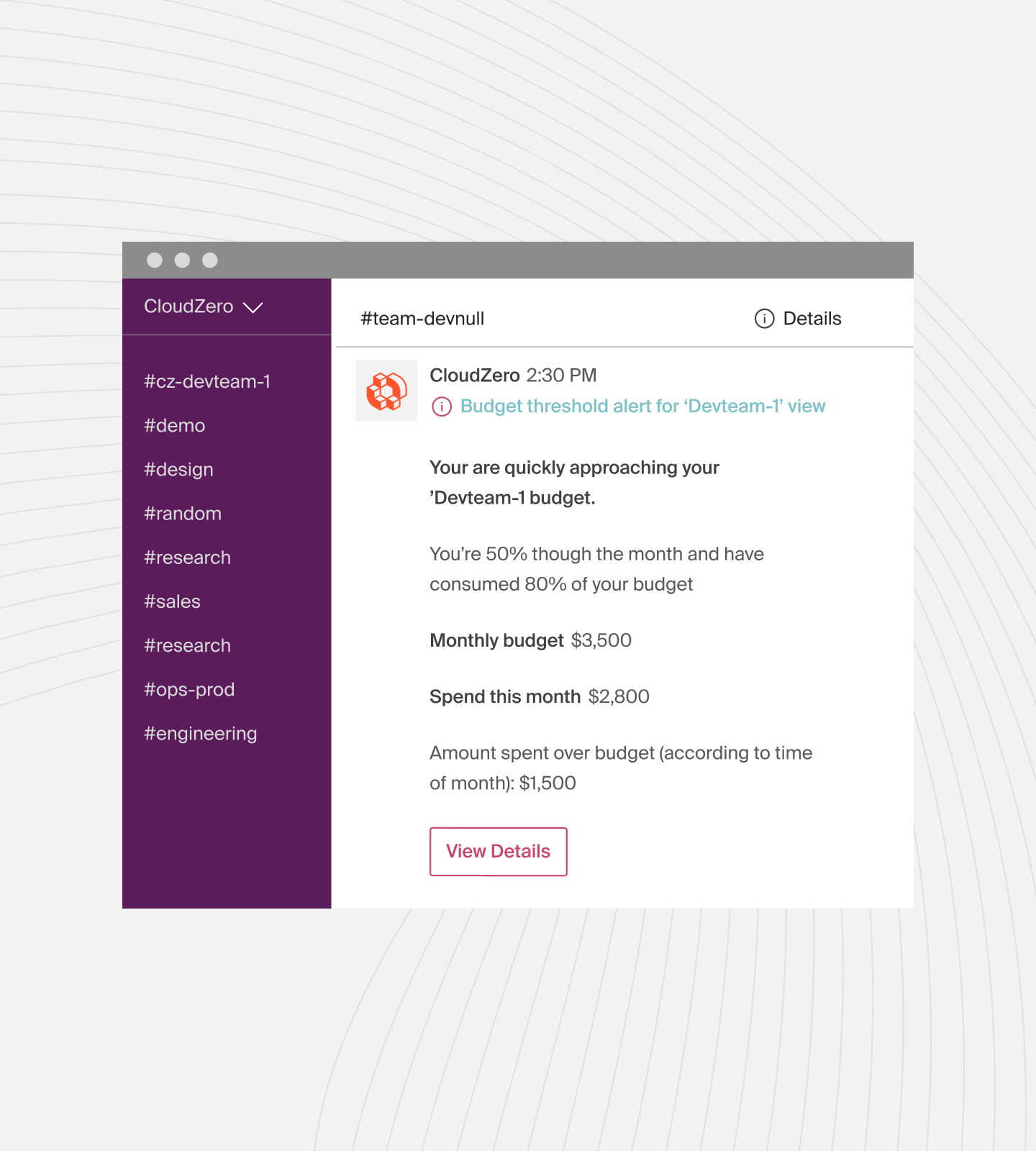
Most cloud cost management tools rely heavily on tagging for cost allocation. With CloudZero, it’s different. The platform allocates 100% of your cloud spend without tags through its CostFormation technology. It automatically analyzes cloud usage using algorithms and real-time data to ensure all costs are accurately tracked and allocated, even in complex environments, without manual tagging.
Other features that make CloudZero stand out include:
- Cost anomaly detection. CloudZero uses AI to detect and alert teams about unusual spending patterns automatically.
- Unit cost analysis. CloudZero also delivers accurate data to support unit economics.
- SaaS integration. CloudZero integrates Snowflake, Datadog, New Relic, and other platforms to offer a comprehensive view of SaaS spending in one place.
2. Azure Cost Management + Billing
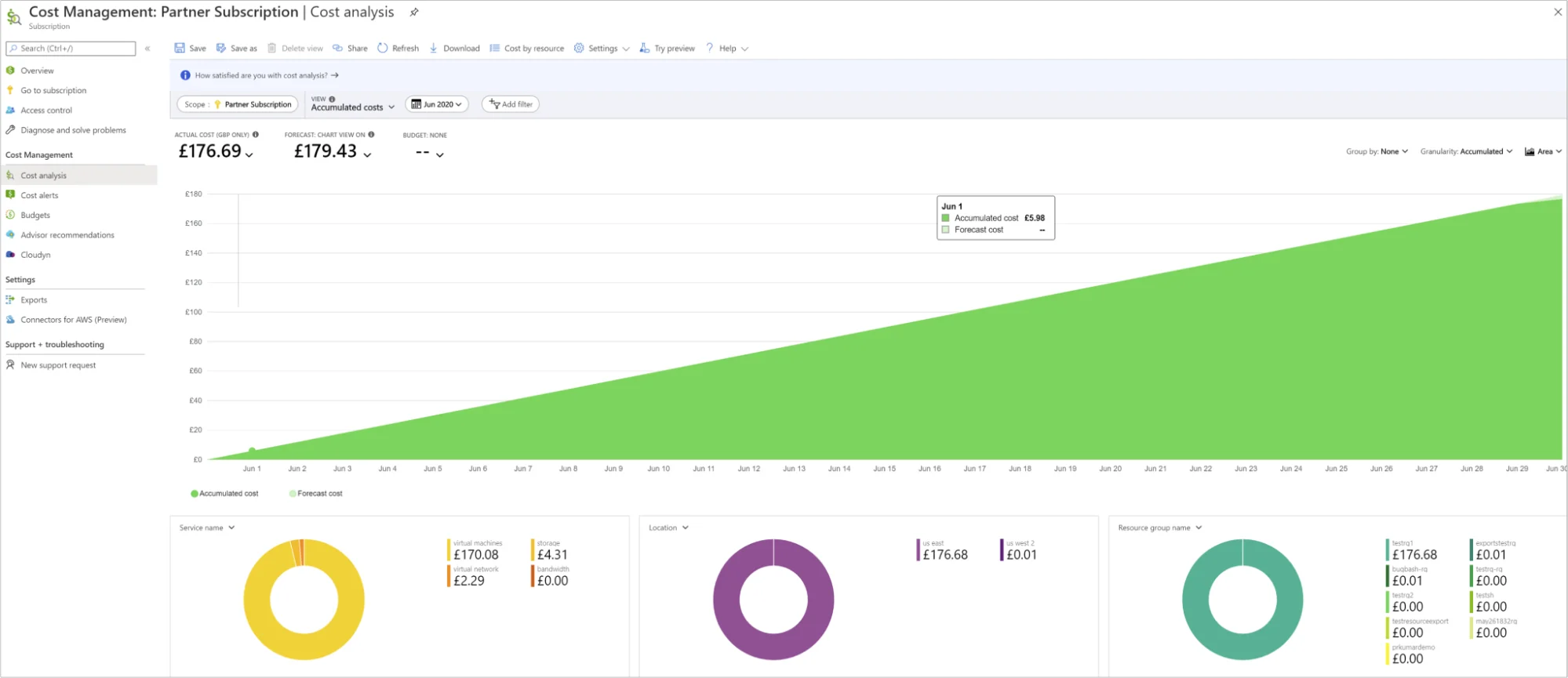
For organizations using Azure services, this is where to start. Azure Cost Management + Billing manages and optimizes costs directly within the Azure portal without needing third-party tools. Users can manage all aspects of their Azure billing, including viewing invoices, managing subscriptions, and handling payments, all from within the same platform.
Azure also offers connectors for AWS that allow users to import their AWS cost data into the Azure portal. This helps you manage both your Azure and AWS costs in one place. Once the connector is set up, it also enables additional features, such as setting budgets and scheduling alerts, to keep track of spending across both platforms.
3. Amazon CloudWatch
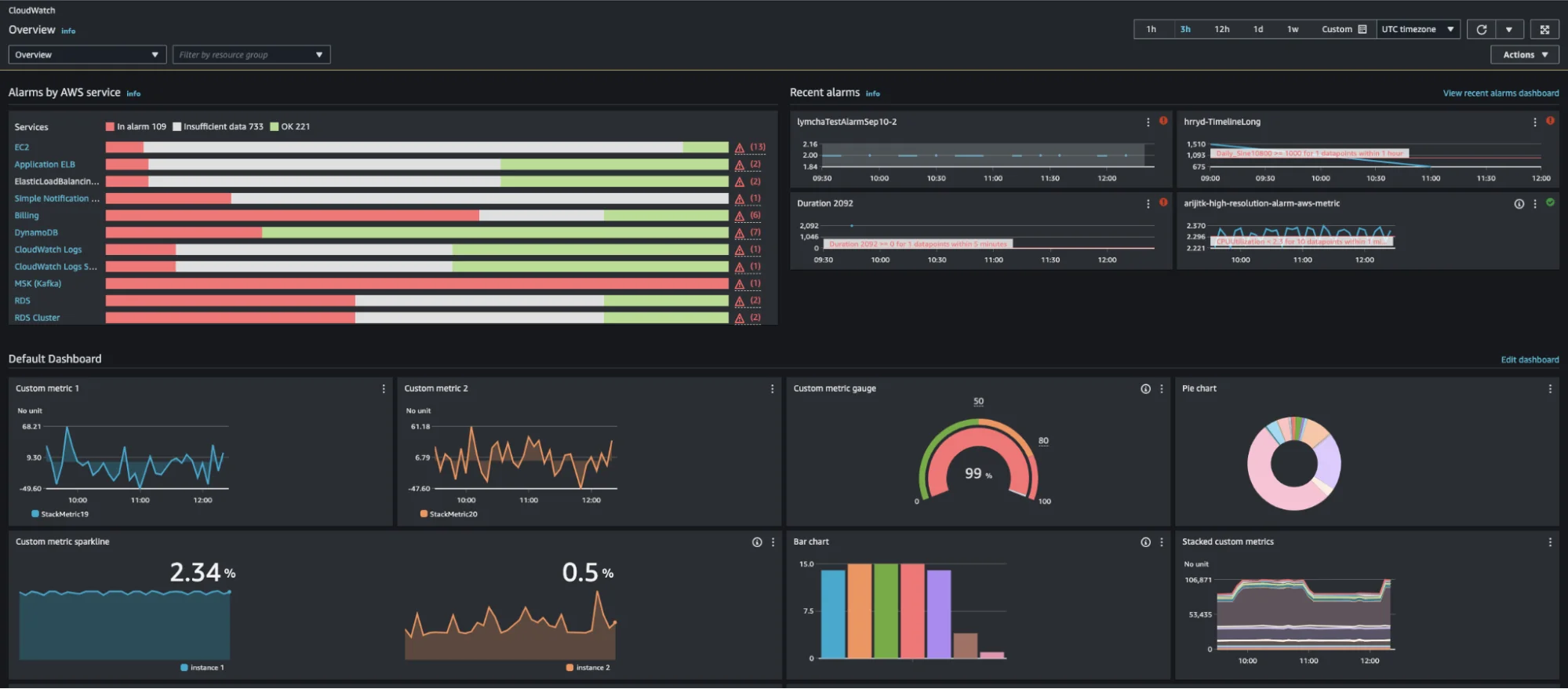
Amazon CloudWatch helps you manage your cloud resources and services within AWS. It collects and displays data on resource use, such as CPU, memory, and bandwidth consumption. This data helps you identify areas for overspending and allows you to take action to lower costs.
With CloudWatch, you can also set alarms to notify you when your usage exceeds a certain level.
Check out our guide for more Amazon CloudWatch use cases, benefits, and pricing.
4. Datadog
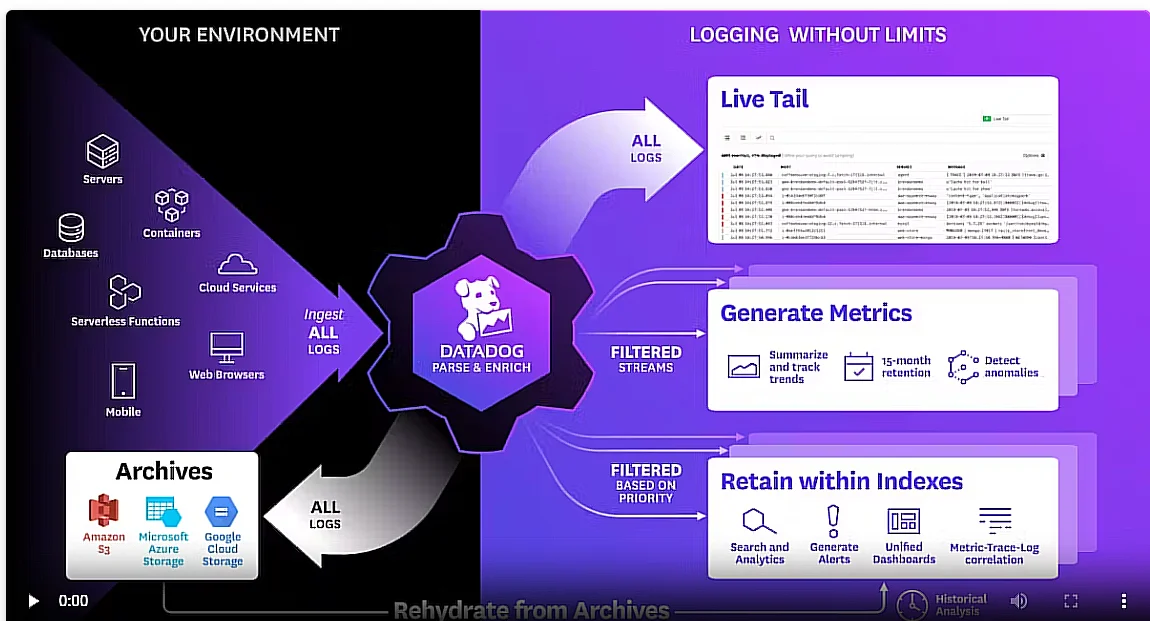
Datadog provides full-stack observability that enables organizations to monitor the health and performance of their infrastructure, applications, and services. It collects, visualizes, and analyzes data from various sources, including cloud providers, servers, databases, containers, and more.
Its customized dashboards help engineering teams spot inefficiencies and optimize resources. It also features automated alerts that notify teams of unusual costs, allowing quick action to avoid overspending.
Datadog offers a variety of services, making its pricing model complex. Here’s a breakdown of Datadog costs and tips on how to manage and optimize them.
5. nOps
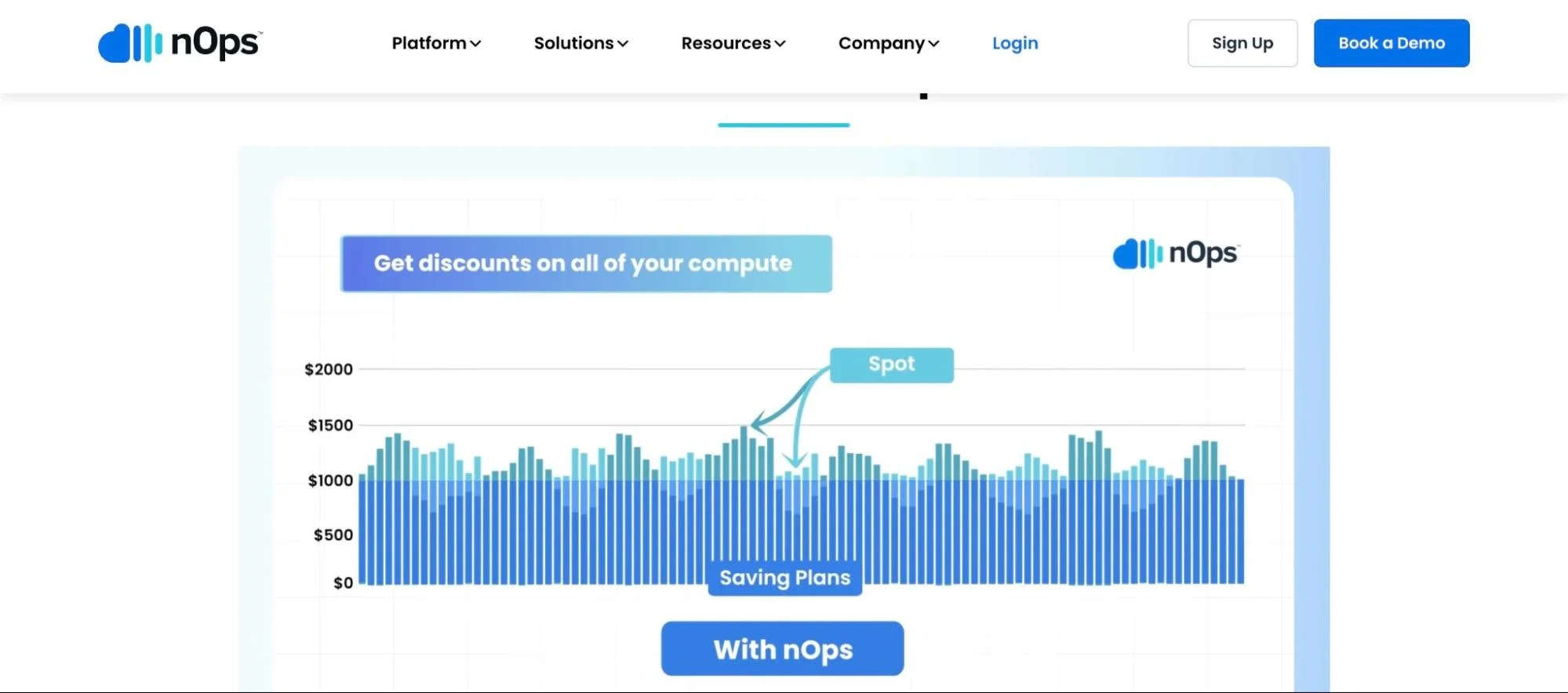
nOps automatically optimizes your AWS environment using Spot Instances, Reserved Instances (RIs), and Savings Plans. The platform continuously analyzes your cloud usage patterns and recommends the most cost-effective options for your workloads.
For Spot Instances, nOps identifies low-cost opportunities without affecting availability. It suggests the best Reserved Instances for predictable workloads, ensuring savings. For AWS Savings Plans, nOps recommends and applies the most cost-efficient plans based on your spending.
6. CloudKeeper
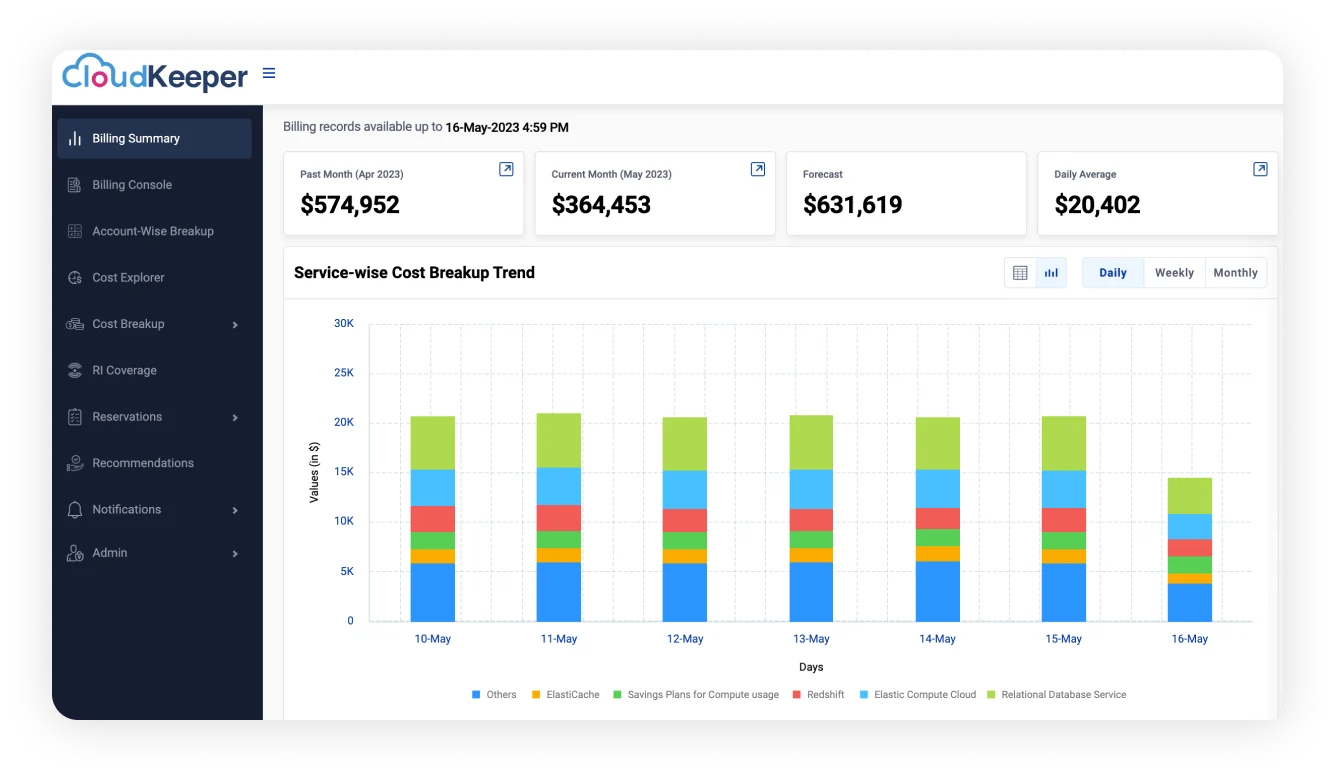
CloudKeeper’s main feature is its automated RIs and Savings Plans management on its CloudKeeper Auto platform. It also optimizes end-to-end cloud by tracking and managing costs across AWS services and providing actionable insight.
CloudKeeper also offers FinOps consulting services that help set and measure KPIs, conduct FinOps maturity assessments, ensure governance and compliance, and build a strong FinOps culture.
7. Zesty
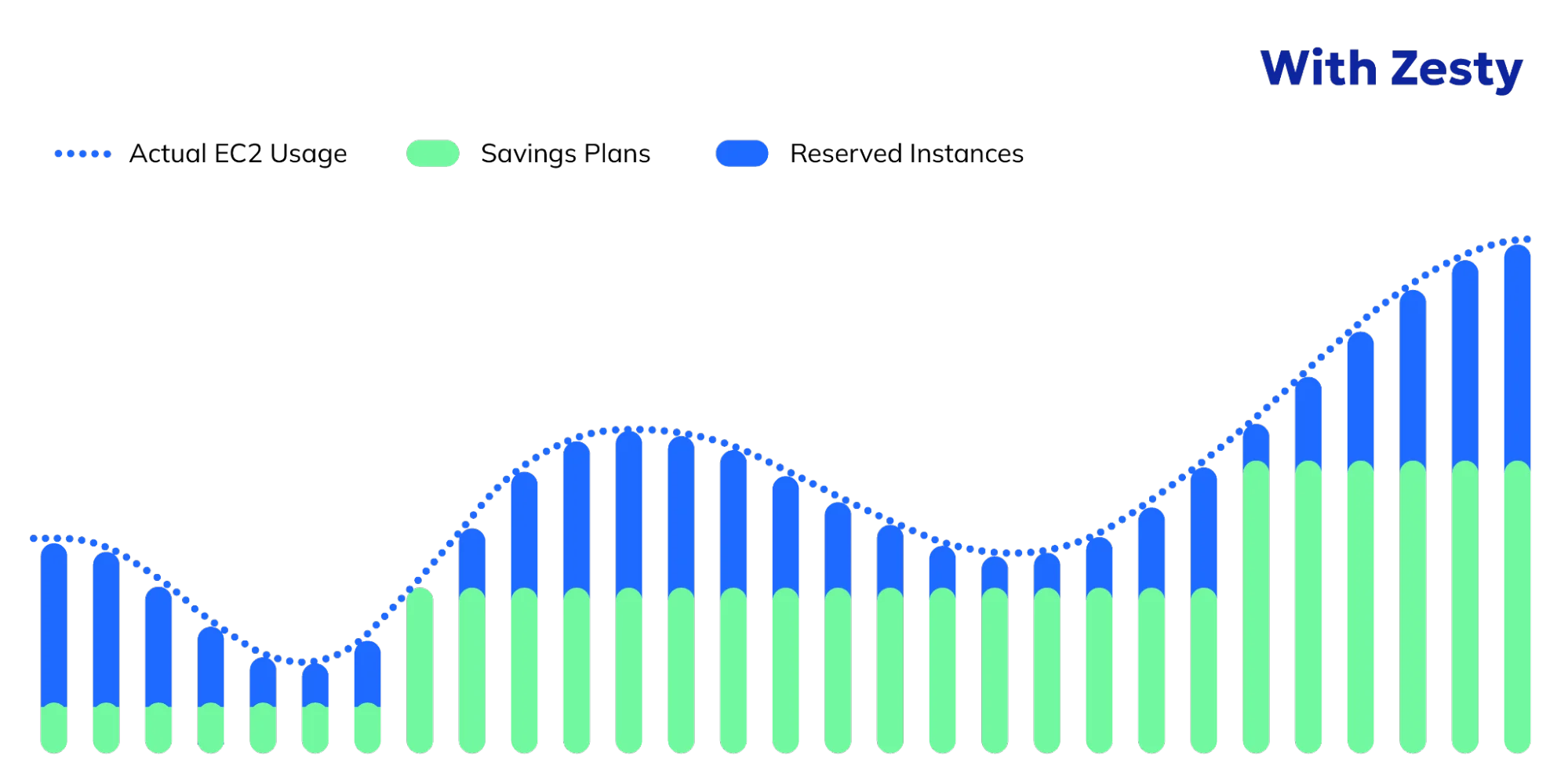
Zesty automates cloud resource management by scaling CPU and RAM in real-time to match application demand, reducing costs and maintaining high performance. This automation minimizes manual intervention, ensuring efficient cloud infrastructure management.
The platform also features tools like Commitment Manager, which automatically adjusts AWS Reserved Instances based on usage. Zesty Disk scales block storage dynamically, potentially saving up to 70% on storage costs.
8. IBM Turbonomic
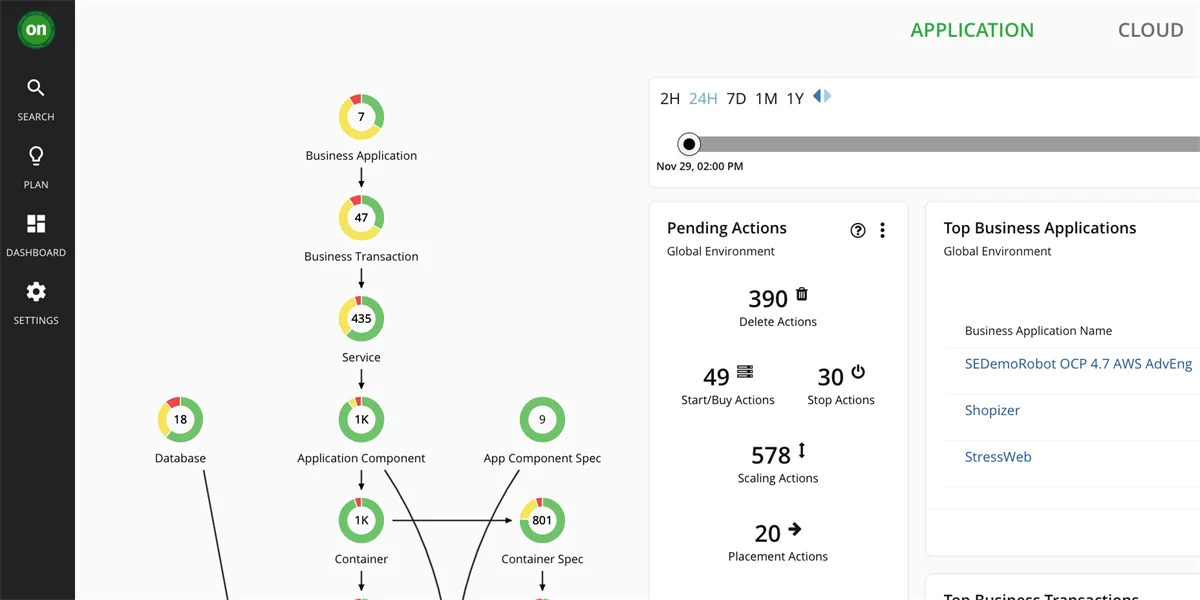
IBM Turbonomic automatically aligns application demand with infrastructure supply in real-time. This feature is especially useful in hybrid and multi-cloud environments, where resource allocation can be complex. By dynamically adjusting resources like virtual machines, storage, and databases, Turbonomic prevents over-provisioning and under-utilization, reducing unnecessary cloud costs.
Additionally, Turbonomic supports Kubernetes optimization and integrates with tools like GitHub, Slack, and Terraform, enhancing its adaptability in modern DevOps and FinOps practices.
9. Kubecost
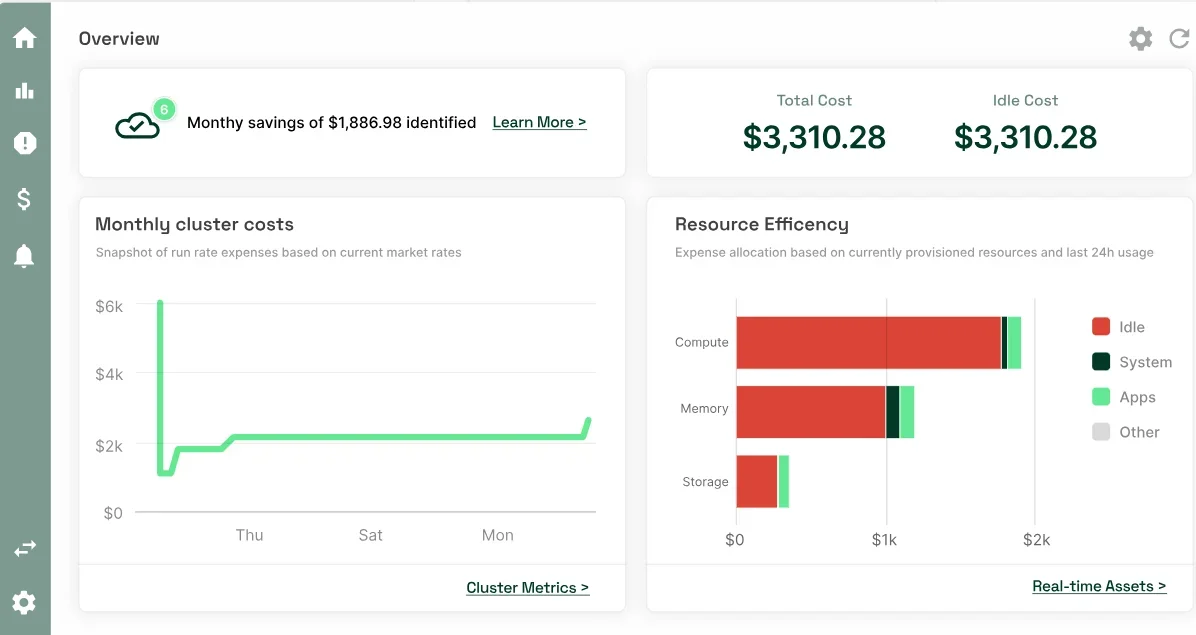
Kubecost unifies cost monitoring for Kubernetes by integrating data from various components. It provides a clear view of costs, covering in-cluster resources, shared services, and external cloud services such as SQL databases and S3 storage. This approach ensures teams can monitor and manage costs across the Kubernetes environment without missing any aspect.
Kubecost also offers anomaly detection, automated actions, optimization insights, and machine learning-based forecasting. These tools help teams manage and predict costs while controlling resources and spending.
10. CloudCheckr
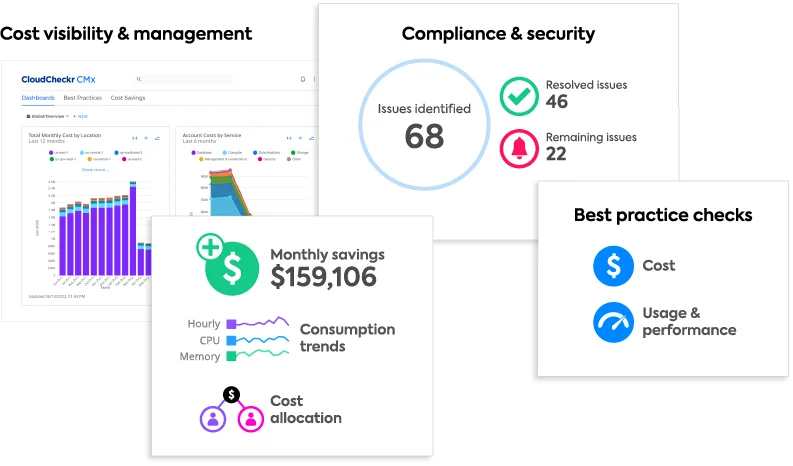
CloudCheckr automates cost optimization by identifying idle resources, shutting them down to reduce waste, and leveraging volume-based purchases for additional savings. This process includes automated rightsizing and rebalancing, continuously optimizing performance and costs.
CloudCheckr also features security visualization and management to detect and eliminate anomalies through automated remediation. This helps prevent malicious actors from exploiting infrastructure misconfigurations in your public cloud. Its compliance management uses over 35 cloud security frameworks to keep your environment audit-ready.
11. CAST AI
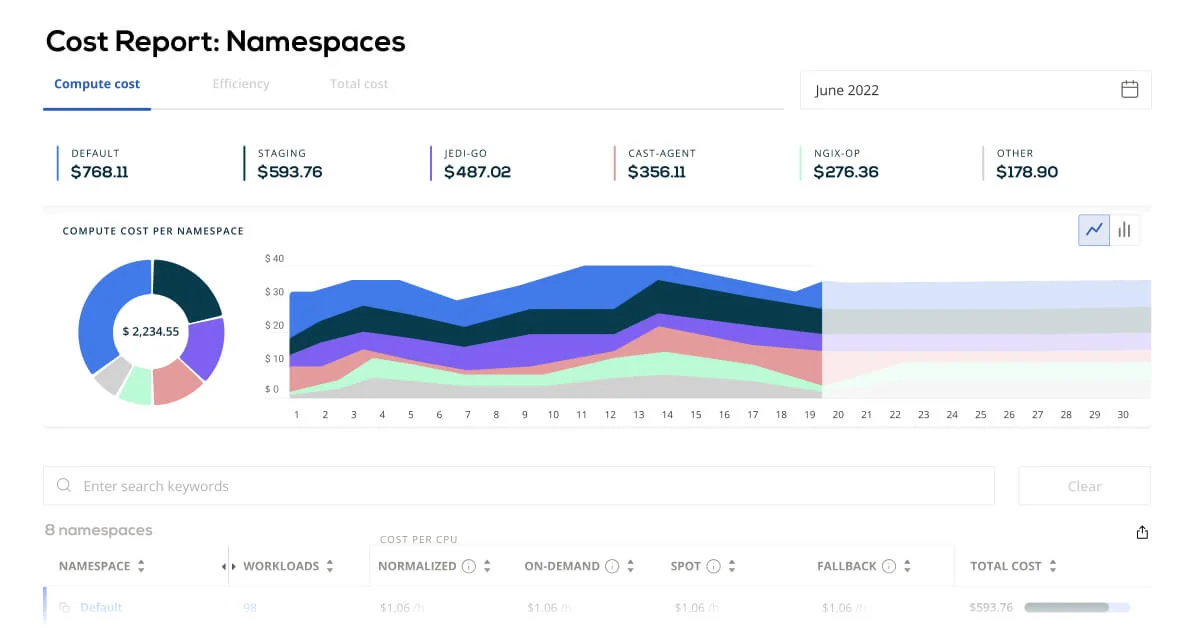
CAST AI is a distinct Kubernetes optimization platform. The platform includes automated cost optimization, multi-cloud management, and real-time cost monitoring. It automates different aspects of Kubernetes management, including workload rightsizing, autoscaling, and spot instances.
CAST AI also offers AI-powered recommendations, continuous compliance, and integrated FinOps tools. Predictive autoscaling and resource optimization reports further enhance its capability, making it a comprehensive tool for managing Kubernetes environments.
If you already use this tool and want a CAST AI alternative for Kubernetes cost optimization, check out our guide here.
How CloudZero’s Cost Per Customer Maximizes Your Business Profitability
Organizations aren’t using cloud cost management tools just to reduce costs and identify waste. They also need ways to boost revenue.
CloudZero’s Cost per Customer helps identify the most profitable customer segments.
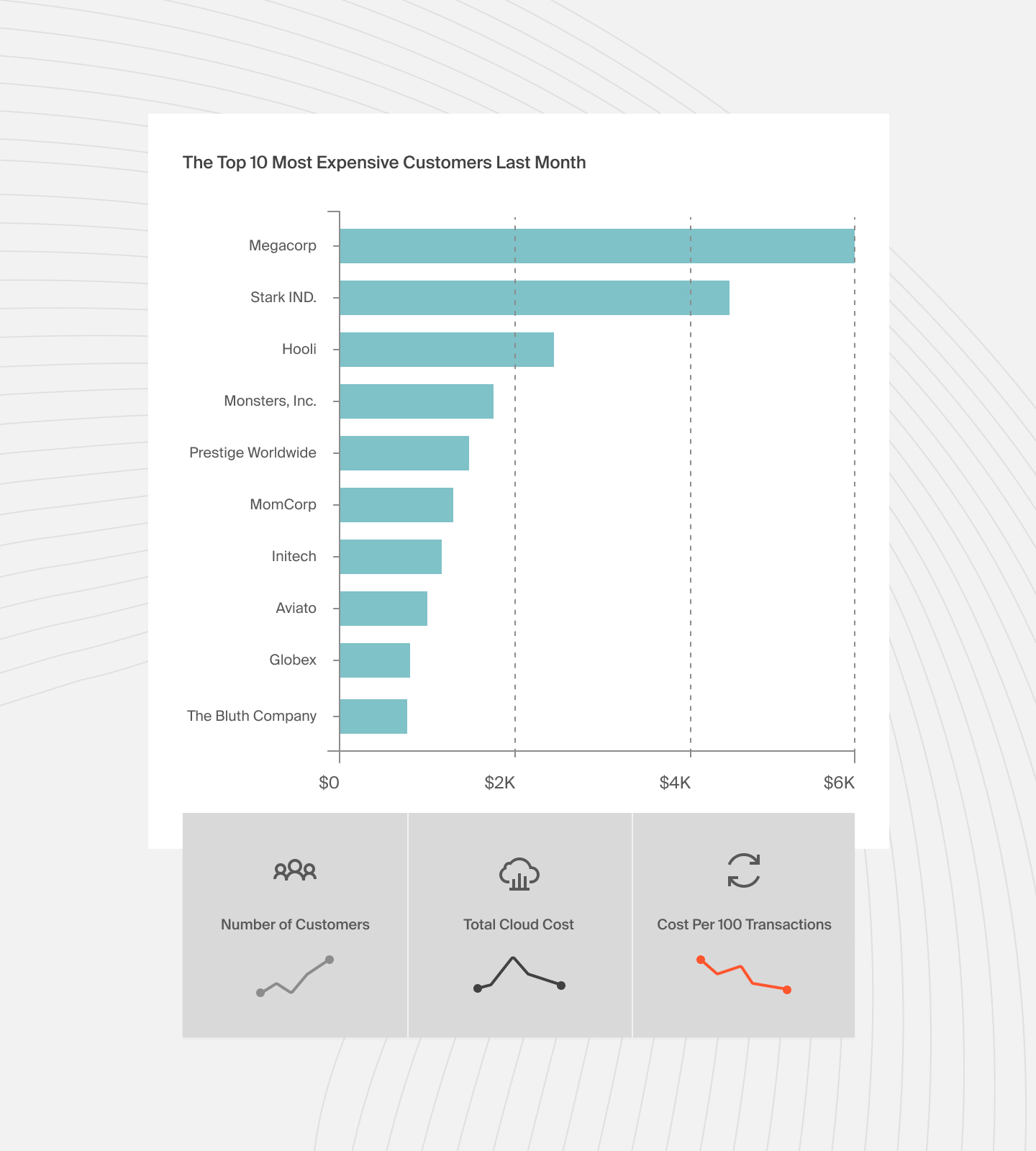
Unlike most platforms that rely on basic calculations, CloudZero uses billing and telemetry data to provide precise cost per customer insights. This approach goes beyond average metrics, revealing hidden savings opportunities. If troubling cost trends emerge within a specific customer or segment, CloudZero offers insights to help address them.
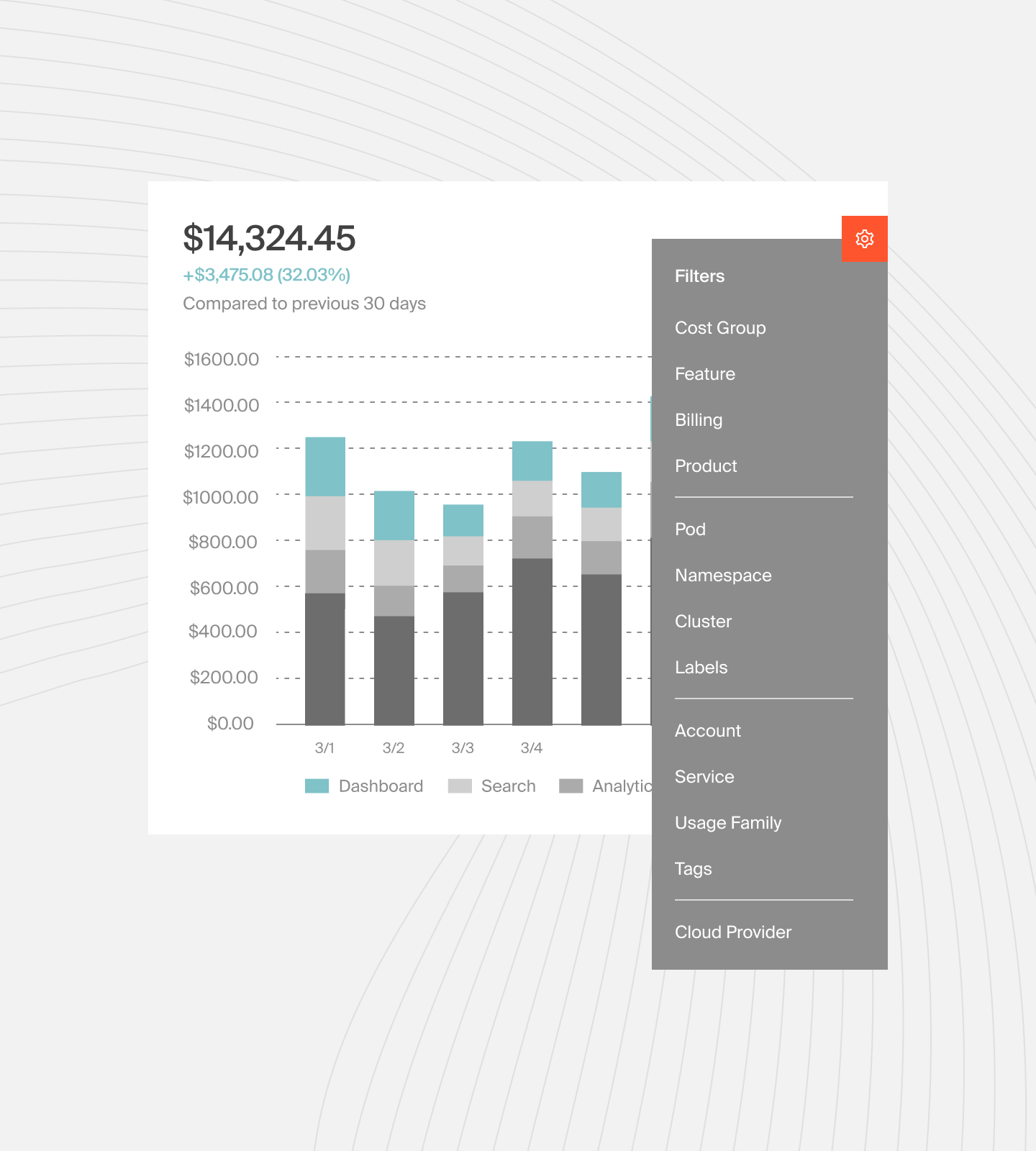
Additionally, CloudZero’s data allows businesses to assess customer profitability, helping refine their go-to-market (GTM) strategies. The largest customer is not always the most profitable. With CloudZero, businesses can evaluate and optimize their marketing, pricing, and renewal strategies to maximize customer profitability.
 to see how companies are saving millions of dollars with the help of CloudZero.
to see how companies are saving millions of dollars with the help of CloudZero.

